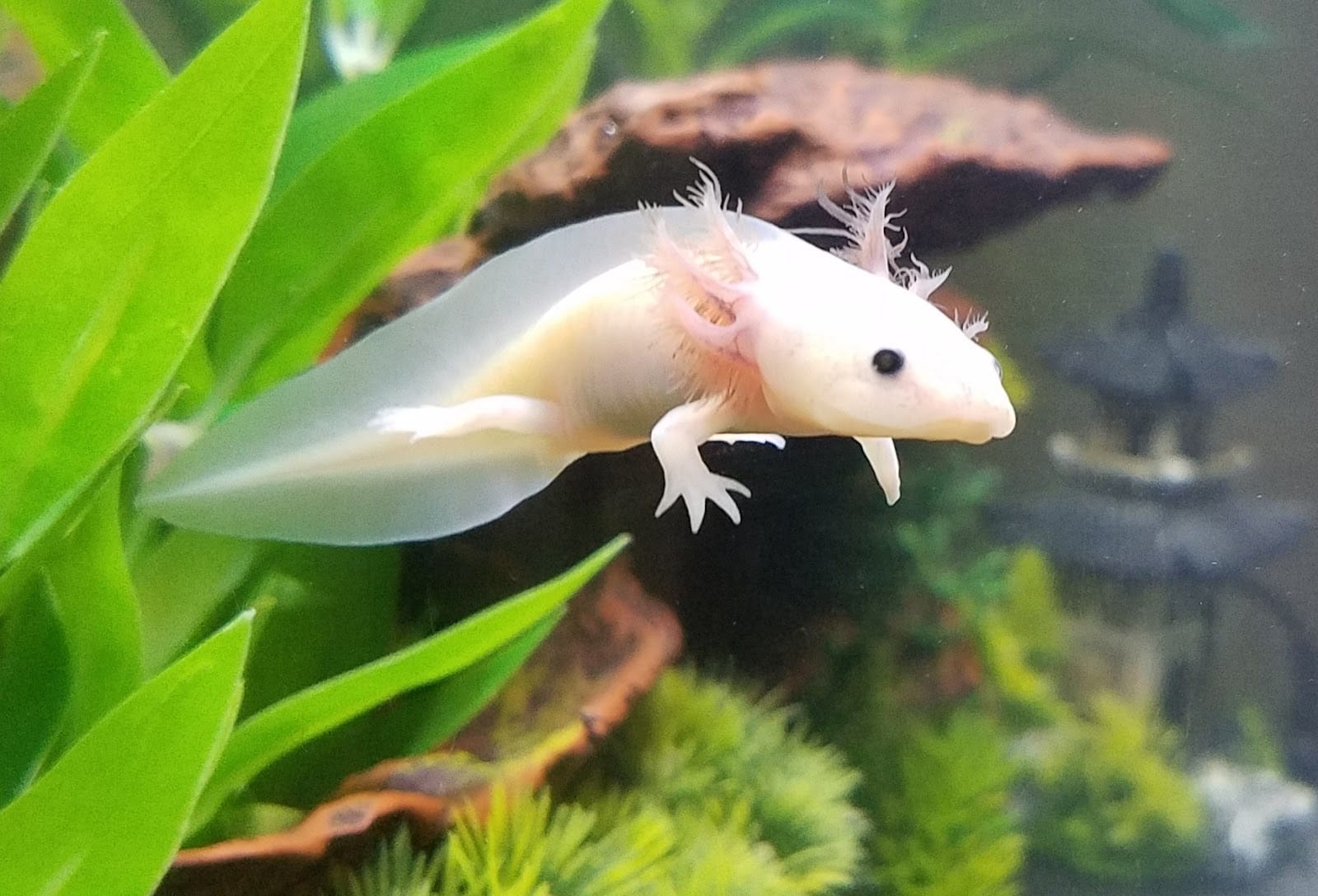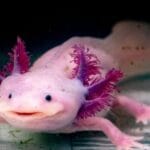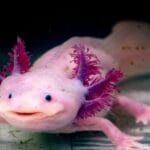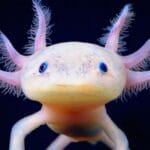Ever heard of an axolotl? These eternally-smiling salamanders, forever stuck in their youthful form, are amazing creatures. But did you know there’s an even more unique variety? Prepare to be amazed by the leucistic axolotl! We’re diving deep into the science and care of these pale pink wonders, exploring what sets them apart from their albino counterparts. Get ready for fascinating facts, helpful tips, and stunning pictures!
Unveiling the Leucistic Axolotl
The first thing you’ll notice about a leucistic axolotl is its striking appearance. Picture a spectrum from pure white to the softest pink – that’s where you’ll find the leucistic axolotl’s skin tone. However, and here’s the key difference, their eyes remain dark, unlike the pink or red eyes of albino axolotls. This distinction, subtle but significant, stems from a fundamental difference in their genetics.
The Melanin Factor: Why Leucistic and Albino Axolotls Look Different
Melanin is like nature’s paintbrush, responsible for the color of our skin, hair, and eyes. Albinism essentially turns off melanin production entirely. Leucism, on the other hand, just turns down the volume. While a leucistic axolotl may have a predominantly white or pink body, it still retains some pigment, particularly in its eyes. It’s not uncommon to even find a few dark speckles on their skin!
Leucism: It’s All in the Genes
Leucism is determined by genes, those tiny blueprints passed down from parents to offspring. Axolotls need to inherit two copies of a specific recessive gene (one from each parent) to display leucistic traits. If they inherit only one copy, they become silent carriers – possessing the gene without expressing it.
This genetic lottery makes breeding leucistic axolotls an intriguing endeavor. Both parents need to carry the recessive gene to produce leucistic offspring. It’s a fascinating demonstration of how genetics can create such striking variations in appearance within a species.
A Side-by-Side Comparison: Leucistic vs. Albino
To solidify our understanding, let’s summarize the key differences between leucistic and albino axolotls:
| Feature | Leucistic Axolotl | Albino Axolotl |
|---|---|---|
| Skin Color | White or pale pink | White or very pale pink |
| Eye Color | Normal (black or blue) | Pink or red |
| Gills | White or transparent | Pink or red |
| Genetic Cause | Reduced melanin production in the skin | Absence of melanin production throughout the body |
Providing a Safe Haven: Caring for Your Leucistic Axolotl
When it comes to caring for leucistic axolotls, consider their sensitive nature. Their reduced melanin makes them more susceptible to bright light than their darker counterparts. While they don’t need to live in complete darkness, providing ample shady spots within their tank is essential. Dimming the lights or using a full tank cover can further enhance their comfort.
Beyond their sensitivity to light, leucistic axolotls share similar care requirements with other axolotls. They thrive in clean, cool water with a balanced diet and a stimulating environment.
Conservation Matters: Protecting Axolotls, Leucistic and Beyond
The popularity of unique axolotl morphs, including the stunning leucistic axolotl, highlights a crucial issue: the urgent need to protect these creatures. Sadly, wild axolotls are critically endangered, facing habitat loss, pollution, and other threats.
Supporting ethical breeding practices is paramount. Responsible breeders prioritize the health and well-being of their axolotls, ensuring they are raised in safe, humane conditions. Choosing axolotls from reputable breeders, and educating ourselves about responsible care, are essential steps in ensuring a future for these incredible creatures.
Are Leucistic Axolotls Rare?
The rarity of leucistic axolotls is a tale of two worlds – the wild and captivity.
Leucistic Axolotls: A Rarity in the Wild
In their natural habitat, spotting a leucistic axolotl is like finding a rare treasure. Their lack of camouflage makes them vulnerable to predators, decreasing their chances of survival to adulthood and reproduction.
The Rise of Leucistic Axolotls: A Captive Breeding Success Story
Interestingly, thanks to captive breeding, leucistic axolotls are now one of the most common color variations found in pet stores. This suggests that while their striking coloration is a disadvantage in the wild, it has, ironically, made them a desirable pet.
However, the abundance of leucistic axolotls in captivity should not overshadow the plight of their wild counterparts. Some experts believe that a focus on breeding for specific traits, like color, could potentially impact the species’ genetic diversity in the long term. This highlights the importance of making informed choices as pet owners and enthusiasts to support axolotl conservation.
How Long Do Leucistic Axolotls Live?
Leucistic axolotls, those captivating salamanders with their pale pink or white bodies and contrasting dark eyes, are known for their relatively long lifespans, especially in captivity.
A Decade or More: Leucistic Axolotl Lifespan in Captivity
On average, leucistic axolotls can live for an impressive 10 to 15 years in a well-maintained home aquarium. That’s comparable to a dog’s lifespan or even longer! Some fortunate individuals even exceed this average, gracing their owners with even more years of companionship.
Wild vs. Captivity: The Impact on Lifespan
In the wild, axolotls are likely to face a different fate. Their average lifespan dwindles to around 5 to 6 years. Why the stark difference? Wild axolotls contend with numerous threats, including predators, food scarcity, and environmental pollution.
In contrast, their captive counterparts enjoy a life of relative comfort and safety. A consistent supply of nutritious food, a clean and spacious environment, and freedom from predators contribute to a longer, healthier life.
Factors Influencing Leucistic Axolotl Lifespan
It’s important to note that these lifespans are just averages. Each axolotl is unique, and factors like genetics, diet, environment, and overall care play a significant role in determining their individual lifespan. While we can’t predict the exact number of years each little buddy will be with us, providing them with the best possible care maximizes their chances of living a long and fulfilling life.
Are you curious about the Jolokia naga, one of the hottest peppers in the world? Or perhaps the khapra beetle, a destructive pest that can infest stored products? Click on the links to learn more about these fascinating insects.















